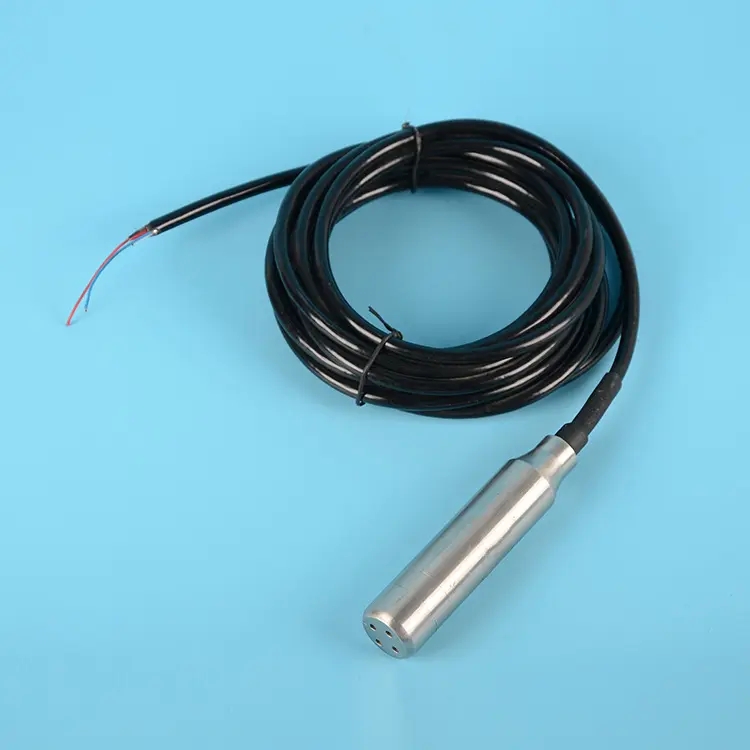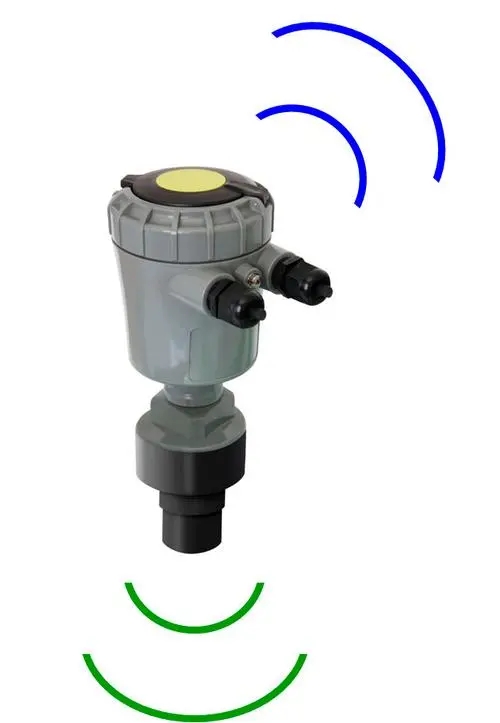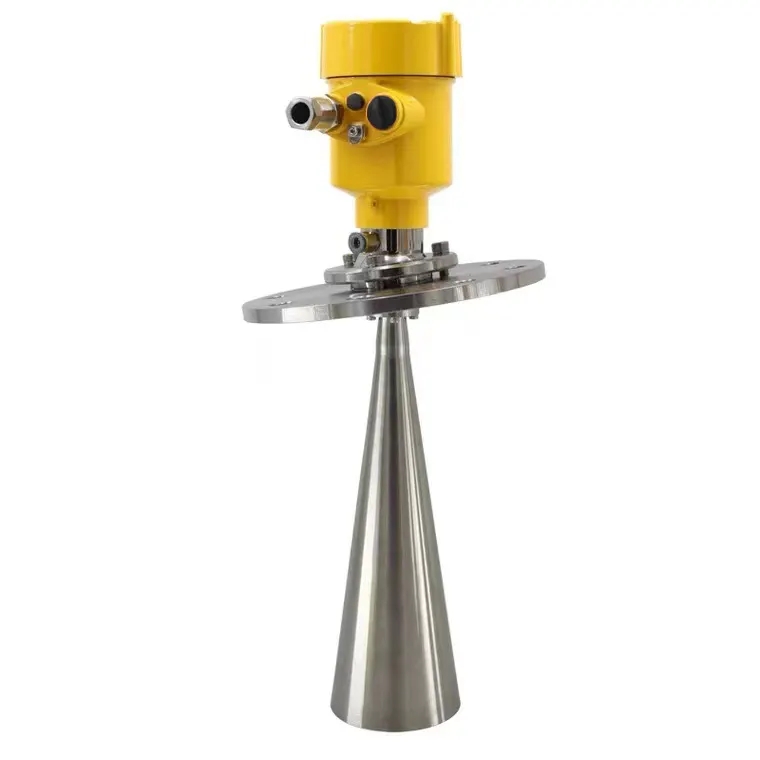

— Blogs —
—Products—
 Consumer hotline +8618073152920
Consumer hotline +8618073152920 WhatsApp:+8615367865107
Address:Room 102, District D, Houhu Industrial Park, Yuelu District, Changsha City, Hunan Province, China
Product knowledge
Time:2024-08-21 22:05:03 Popularity:2053
Liquid Level Sensor is a device for monitoring the height of liquids, which is widely used in many fields such as industry, environmental protection and hydrology. It converts liquid height information into electrical or digital signals through various physical principles for recording, control or monitoring.

1. Float type Liquid Level Sensor: It utilizes the float to float up and down in the liquid to measure the liquid level. The float moves with the change of liquid level, and this movement is converted into an electrical signal output by a mechanical device.
2. Capacitance Liquid Level Sensor: Level is determined by measuring the difference in capacitance between the liquid and the sensor. Changes in liquid level result in changes in capacitance values, and the level is determined by measuring these changes.
3. Piezoresistive Liquid Level Sensor: Based on the principle of hydrostatic pressure of liquid, the hydrostatic pressure of liquid is converted into an electrical signal. The sensitive element inside the sensor senses the liquid pressure and generates an electrical signal that is proportional to the height of the liquid level.
- Contact Liquid Level Sensor: such as float, float, hydrostatic, etc., this type of sensor is directly in contact with the measured liquid, through the change of physical quantity to measure the liquid level.
- Non-contact Liquid Level Sensor: such as ultrasonic Liquid Level Sensor and radar Liquid Level Sensor, they do not directly contact with the liquid, but by transmitting acoustic or electromagnetic waves and receiving its reflected signal to measure the liquid level.
The working principle of Liquid Level Sensor can vary according to its type and specific realization, but it can be divided into several main categories: hydrostatic, float, capacitive, ultrasonic and optical. The following are the basic working principles of these types of Liquid Level Sensors:
Hydrostatic Liquid Level Sensor works on the principle that the static pressure of liquid is proportional to the height of liquid. When the liquid level transmitter (sensor) is put into the measured liquid at a certain depth, the pressure on the liquid surface of the sensor can be calculated by the formula, which is related to the density of the liquid, the acceleration of gravity and the depth of the transmitter into the liquid. The sensor introduces the pressure of the liquid into the positive pressure chamber through the air-conducting stainless steel, and at the same time the atmospheric pressure on the liquid surface is connected to the negative pressure chamber of the sensor to counteract the atmospheric pressure at the back of the sensor, so as to measure the accurate static pressure of the liquid. This pressure signal is converted and compensated to a current signal (e.g., 4-20mA) output, which is used to indicate the height of the liquid level.
The float type Liquid Level Sensor utilizes the principle that the float rises and falls with the liquid level to detect the liquid level. The float is usually equipped with magnetic materials or electronic components, when the float floats up and down with the liquid level change, it will drive the internal magnetic materials or electronic components to produce corresponding signal changes. These signal changes can be converted to liquid level indication after processing. Float type Liquid Level Sensor is characterized by simple structure and high reliability.
Capacitance Liquid Level Sensor utilizes the change of capacitance value between the measured medium and the sensor probe to detect the liquid level. When the liquid level rises, the dielectric constant between the measured medium and the probe changes, resulting in a change in the capacitance value. This change in capacitance value is converted and compensated by a circuit to indicate the liquid level. Capacitance Liquid Level Sensor has the characteristics of non-contact measurement, high accuracy and good reliability.
Ultrasonic Liquid Level Sensor measures the liquid level by transmitting ultrasonic pulses to the liquid surface and receiving its reflected wave. The sensor transmits ultrasonic pulses and receives the reflected waves after a certain period of time, and this time difference is proportional to the distance from the liquid level to the sensor. This time difference is proportional to the distance from the liquid surface to the sensor. By measuring this time difference and calculating it, the height of the liquid level can be obtained. Ultrasonic Liquid Level Sensor is characterized by non-contact measurement, wide measurement range and high accuracy.
Optical Liquid Level Sensor utilizes the principle of reflection or refraction of light at the interface between liquid and air to detect liquid level. The sensor emits a light beam toward the surface of the material and records the light reflected or refracted from the surface by a photocell or other component. The height of the liquid level is determined based on the change in light. Optical Liquid Level Sensor is characterized by fast response time and high accuracy.

Choosing the right Liquid Level Sensor is a process that takes into account a number of factors. Here are some key steps and considerations to help you choose the right Liquid Level Sensor:
1. Determine the measurement requirement:
- Measurement medium: the type of liquid to be measured (e.g., water, oil, acid-base solution, etc.).
- Measuring Range: The maximum and minimum measurement height of the liquid.
- Measurement Accuracy: The desired measurement accuracy or resolution.
2. Environmental conditions:
- Temperature: The ambient temperature at which the sensor operates.
- Pressure: The pressure in the vessel where the liquid is located.
- Corrosivity: whether the liquid is corrosive or not, and whether the sensor made of special material is needed.
3. Sensor type:
- Contact and non-contact: Selected according to whether direct contact with the liquid is required.
- Float type, capacitive type, ultrasonic type, etc.: choose according to different working principles and application scenarios.
4. Output signal:
- Analog signal (e.g. 4-20mA) or digital signal (e.g. RS485, I2C): choose according to the needs of control system and monitoring equipment.
5. Mounting method:
- Side mounting, top mounting or bottom mounting: choose according to the structure of the container and the installation space.
6. Power requirements:
- Confirm the working voltage and power consumption of the sensor to ensure that a stable power supply can be provided at the site.
7. Certification and standards:
- Select sensors that comply with relevant industry standards and certifications to ensure quality and safety.
8. Budget and maintenance:
- Consider the purchase cost and maintenance cost of the sensor.
9. Suppliers and after-sales service:
- Select reputable suppliers and consider their technical support and after-sales service.

By following the above steps, you can shortlist the Liquid Level Sensor that meets your specific needs, and it is best to conduct on-site testing or consult a professional before making a final decision.
In summary, Liquid Level Sensors work on a variety of principles, but they are all based on the change of some physical quantity to detect the height of the liquid level. In practice, each Liquid Level Sensor has its specific application scenarios and advantages. When choosing one, you need to consider factors such as liquid characteristics, measuring range, accuracy requirements, environmental conditions, etc., so that you can choose the right type of Liquid Level Sensor.
Related recommendations
Sensors & Weather Stations Catalog
Agriculture Sensors and Weather Stations Catalog-NiuBoL.pdf
Weather Stations Catalog-NiuBoL.pdf
Related products
 Combined air temperature and relative humidity sensor
Combined air temperature and relative humidity sensor Soil Moisture Temperature sensor for irrigation
Soil Moisture Temperature sensor for irrigation Soil pH sensor RS485 soil Testing instrument soil ph meter for agriculture
Soil pH sensor RS485 soil Testing instrument soil ph meter for agriculture Wind Speed sensor Output Modbus/RS485/Analog/0-5V/4-20mA
Wind Speed sensor Output Modbus/RS485/Analog/0-5V/4-20mA Tipping bucket rain gauge for weather monitoring auto rainfall sensor RS485/Outdoor/stainless steel
Tipping bucket rain gauge for weather monitoring auto rainfall sensor RS485/Outdoor/stainless steel Pyranometer Solar Radiation Sensor 4-20mA/RS485
Pyranometer Solar Radiation Sensor 4-20mA/RS485
Screenshot, WhatsApp to identify the QR code
WhatsApp number:+8615367865107
(Click on WhatsApp to copy and add friends)
